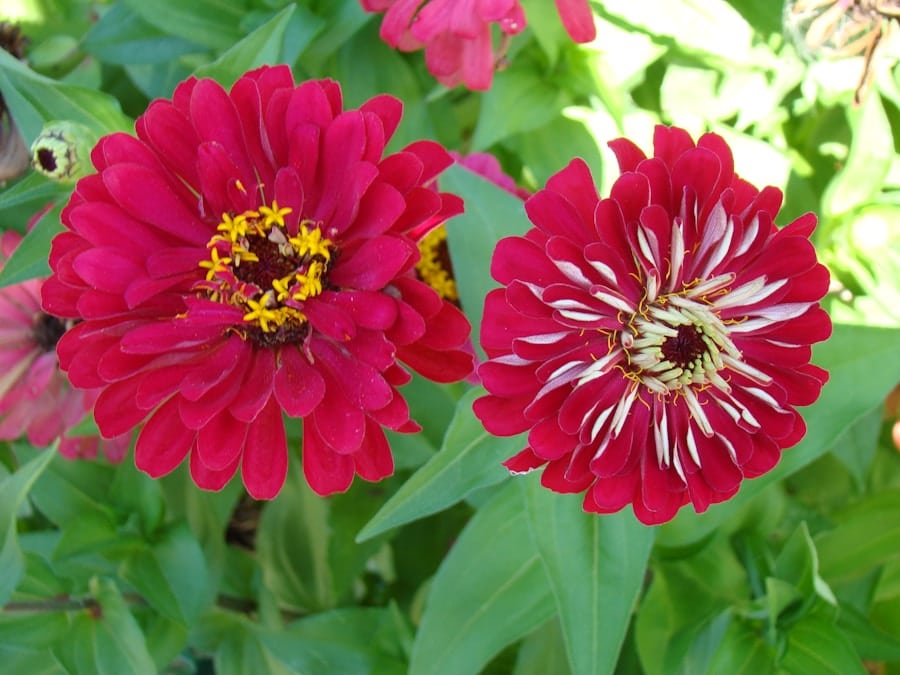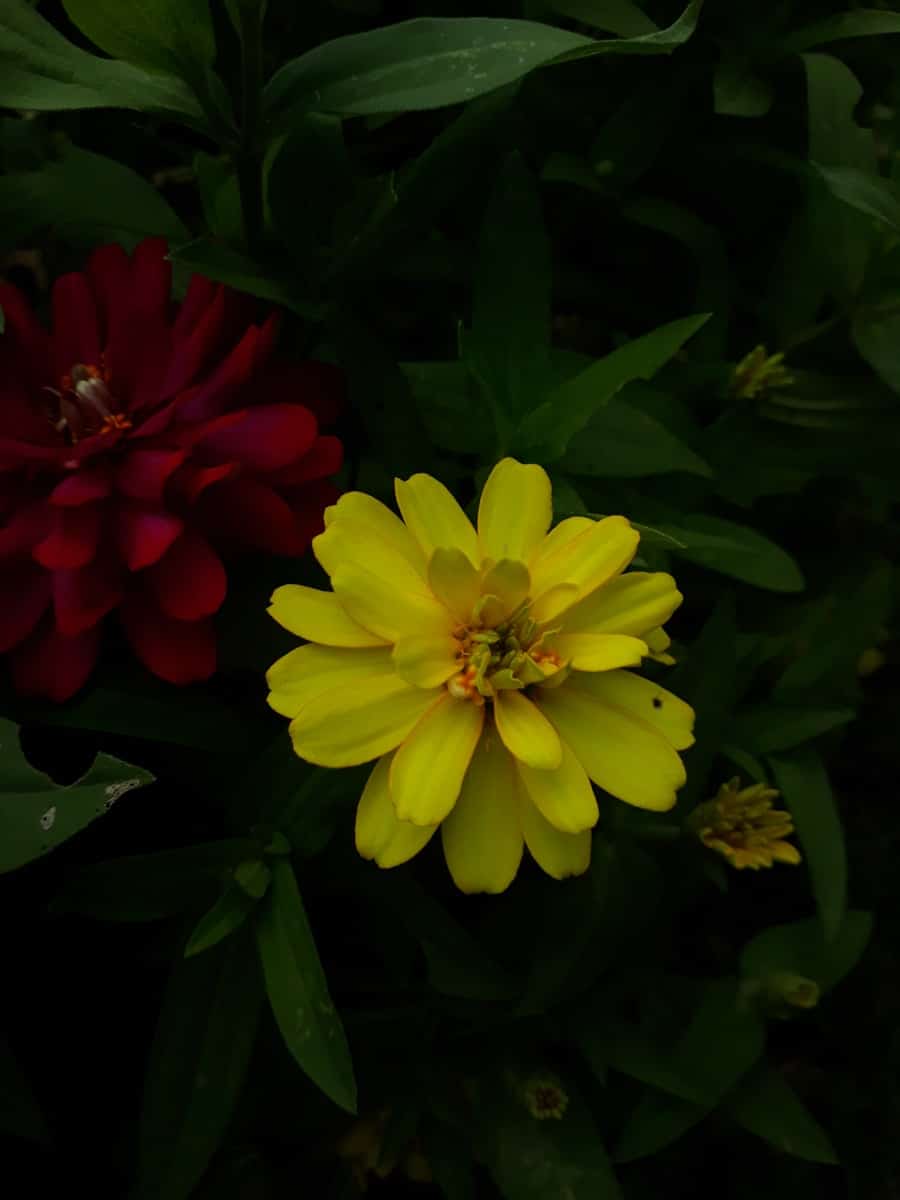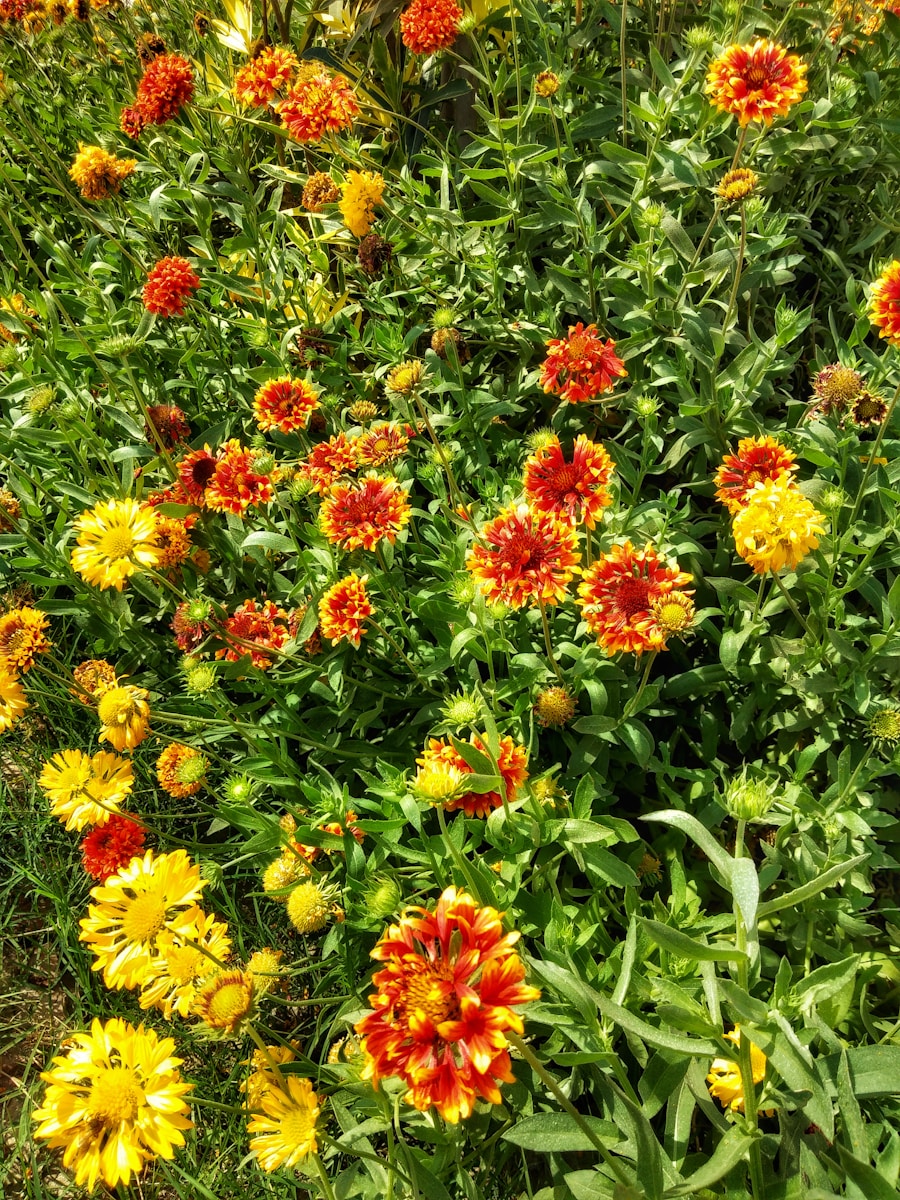When I think of flowers, the vibrant hues of red and yellow immediately come to mind, each color carrying its own rich symbolism. Red flowers often evoke feelings of passion, love, and desire. They are the quintessential representation of romance, making them a popular choice for bouquets on special occasions like anniversaries and Valentine’s Day.
The deep crimson of a rose or the fiery petals of a tulip can convey emotions that words sometimes fail to express. In many cultures, red flowers symbolize courage and strength, serving as a reminder of the resilience of the human spirit. On the other hand, yellow flowers radiate joy and positivity.
They are often associated with friendship, happiness, and new beginnings. The bright, sunny disposition of a daffodil or a marigold can instantly uplift one’s mood, making them perfect for celebrations or as a gesture of goodwill. In various traditions, yellow flowers are seen as symbols of hope and optimism, often used in ceremonies to signify new life or fresh starts.
Together, red and yellow flowers create a dynamic interplay of emotions, representing both the fervor of love and the warmth of friendship. Visit Our Site at https://chikusgarden.com/ for more information.
Key Takeaways
- Red flowers symbolize love, passion, and courage, while yellow flowers symbolize happiness, friendship, and joy.
- Popular varieties of vibrant red flowers include roses, tulips, and poppies, while popular varieties of vibrant yellow flowers include sunflowers, daffodils, and marigolds.
- To care for vibrant red and yellow flowers, ensure they receive adequate sunlight, water, and well-drained soil, and deadhead regularly to promote continuous blooming.
- When designing a garden with vibrant red and yellow flowers, consider their height, bloom time, and complementary foliage to create a visually appealing and balanced landscape.
- Vibrant red and yellow flowers can be used in floral arrangements to add a pop of color and convey different emotions, from romance to cheerfulness.
- Planting vibrant red and yellow flowers can attract pollinators such as bees, butterflies, and hummingbirds, contributing to a healthy and diverse ecosystem.
- Vibrant red and yellow flowers hold cultural significance in various traditions and ceremonies, representing prosperity, good luck, and celebration.
- The best locations to see vibrant red and yellow flowers in bloom include botanical gardens, flower festivals, and natural reserves known for their diverse flora.
Popular Varieties of Vibrant Red and Yellow Flowers
The Timeless Beauty of Red Flowers
Among the most popular red flowers is the classic rose, known for its timeless beauty and romantic connotations. Roses come in various shades of red, from deep burgundy to bright scarlet, each carrying its own meaning. Another striking option is the red gerbera daisy, which adds a playful touch to any arrangement with its bold petals and cheerful demeanor.
The Warmth of Yellow Flowers
When it comes to yellow flowers, sunflowers stand out as a favorite. Their large, round faces turn toward the sun, embodying warmth and cheerfulness. Daffodils are another beloved choice, heralding the arrival of spring with their trumpet-shaped blooms.
The Unique Charm of Each Flower
Marigolds also deserve mention; their vibrant orange-yellow hues are not only visually appealing but also serve practical purposes in gardens by repelling pests. Each of these flowers brings its unique charm to gardens and arrangements alike, making them essential components in any floral enthusiast’s repertoire.
How to Care for Vibrant Red and Yellow Flowers

Caring for vibrant red and yellow flowers requires attention to detail and an understanding of their specific needs. For instance, roses thrive in well-drained soil with plenty of sunlight. I’ve learned that regular pruning helps promote healthy growth and encourages more blooms throughout the season.
Watering is crucial as well; I make it a point to water them deeply but infrequently to encourage strong root development. Additionally, applying a balanced fertilizer can provide the necessary nutrients for these flowers to flourish. Yellow flowers like sunflowers and daffodils also have their own care requirements.
Sunflowers prefer full sun and well-drained soil, much like roses. I find that planting them in a location that receives at least six hours of sunlight daily yields the best results. Daffodils, on the other hand, are relatively low-maintenance once established.
They thrive in well-drained soil and can tolerate some shade. I always ensure that I deadhead spent blooms to encourage further flowering and maintain the plant’s overall health.
Designing a Garden with Vibrant Red and Yellow Flowers
| Flower Type | Color | Height (inches) | Blooming Season |
|---|---|---|---|
| Rose | Red | 12-36 | Spring to Fall |
| Tulip | Yellow | 6-24 | Spring |
| Marigold | Red & Yellow | 6-36 | Spring to Fall |
| Gerbera Daisy | Red & Yellow | 12-18 | Spring to Fall |
Designing a garden filled with vibrant red and yellow flowers is an exciting endeavor that allows me to express my creativity. I often start by selecting a color scheme that balances these two bold hues. For instance, pairing deep red roses with bright yellow sunflowers creates a striking contrast that draws the eye.
I also consider the height and texture of each flower; taller varieties like sunflowers can serve as backdrops for shorter blooms like marigolds or gerbera daisies. Incorporating different shapes and sizes adds depth to my garden design. I enjoy mixing rounded blooms with spiky ones to create visual interest.
Additionally, I pay attention to seasonal blooms; planting early spring daffodils alongside summer-blooming roses ensures that my garden remains vibrant throughout the growing season. Pathways lined with these colorful flowers can create inviting spaces for relaxation and enjoyment, making my garden not just a visual feast but also a sanctuary for reflection.
Using Vibrant Red and Yellow Flowers in Floral Arrangements
When it comes to floral arrangements, vibrant red and yellow flowers offer endless possibilities for creativity. I often start by selecting a focal flower—usually a bold red rose or sunflower—to anchor my arrangement. From there, I build around it with complementary blooms like yellow daisies or marigolds to create a harmonious balance.
The interplay between these colors can evoke different moods; for instance, an arrangement heavy on red can convey passion, while one dominated by yellow can feel cheerful and uplifting. I also enjoy experimenting with different textures in my arrangements. Incorporating greenery or filler flowers can add depth and dimension to the overall design.
For instance, using lush ferns or delicate baby’s breath alongside my vibrant blooms creates a beautiful contrast that enhances their colors. Additionally, I pay attention to the container; a rustic vase can lend a charming touch to a garden-inspired arrangement, while a sleek glass vase can elevate a more modern design.
Attracting Pollinators with Vibrant Red and Yellow Flowers

One of the most rewarding aspects of cultivating vibrant red and yellow flowers is their ability to attract pollinators like bees and butterflies. I’ve discovered that planting clusters of these colorful blooms can create a welcoming environment for these essential creatures. For example, red gerbera daisies are particularly appealing to bees due to their bright color and accessible nectar.
Similarly, sunflowers serve as beacons for pollinators with their large blooms that provide ample food sources. To further enhance my garden’s appeal to pollinators, I avoid using pesticides that could harm these beneficial insects. Instead, I focus on creating a diverse ecosystem by incorporating various plants that bloom at different times throughout the season.
This ensures that there is always something in bloom for pollinators to enjoy. By fostering an environment rich in vibrant red and yellow flowers, I not only beautify my space but also contribute to the health of local ecosystems.
The Cultural Significance of Vibrant Red and Yellow Flowers
The cultural significance of vibrant red and yellow flowers is profound and varied across different societies. In many cultures, red flowers symbolize love and passion; they are often used in weddings and romantic gestures. For instance, in Chinese culture, red is associated with good fortune and happiness, making red flowers popular during celebrations like Lunar New Year.
Conversely, yellow flowers often represent friendship and joy; they are frequently gifted to friends or used in celebrations to convey goodwill. In addition to their emotional symbolism, these colors also hold historical significance in various traditions. For example, marigolds are revered in Hindu culture during festivals like Diwali as symbols of prosperity and protection against evil spirits.
Similarly, sunflowers have been associated with loyalty and adoration in many cultures due to their tendency to follow the sun throughout the day. Understanding these cultural meanings enriches my appreciation for these beautiful blooms and inspires me to incorporate them thoughtfully into my life.
The Best Locations to See Vibrant Red and Yellow Flowers in Bloom
As an avid flower enthusiast, I relish the opportunity to explore locations where vibrant red and yellow flowers bloom in abundance. One such place is the Keukenhof Gardens in the Netherlands, renowned for its stunning tulip displays each spring.
Closer to home, botanical gardens often feature dedicated sections showcasing seasonal blooms. I find joy in visiting local botanical gardens during springtime when daffodils and tulips are at their peak. Additionally, many public parks host flower festivals that celebrate these vibrant colors through various displays and arrangements.
Whether wandering through expansive gardens or attending local events, I am always on the lookout for opportunities to immerse myself in the beauty of red and yellow flowers in full bloom. In conclusion, vibrant red and yellow flowers hold immense beauty and significance in our lives. From their rich symbolism to their role in attracting pollinators, these flowers enrich our gardens and floral arrangements while connecting us to cultural traditions around the world.
As I continue my journey through the world of gardening and floral design, I remain inspired by the endless possibilities these colors offer for creativity and expression.
If you are looking to add some vibrant colors to your garden, consider planting red and yellow flowers. These bright blooms can add a pop of color and cheer to any outdoor space. For tips on how to propagate plants like these, check out this article on how to propagate a prickly pear cactus. This guide will provide you with step-by-step instructions on how to successfully propagate this unique plant.
FAQs
What are some common red and yellow flowers?
Some common red and yellow flowers include roses, tulips, sunflowers, marigolds, zinnias, and dahlias.
What do red and yellow flowers symbolize?
Red flowers often symbolize love, passion, and courage, while yellow flowers symbolize happiness, friendship, and joy. When combined, red and yellow flowers can symbolize a combination of these emotions.
How do you care for red and yellow flowers?
Red and yellow flowers generally require similar care to other types of flowers. They typically need regular watering, well-drained soil, and adequate sunlight. Specific care instructions may vary depending on the type of flower.
Can red and yellow flowers be used in floral arrangements?
Yes, red and yellow flowers can be used in floral arrangements to create vibrant and eye-catching displays. They can be combined with other colors and types of flowers to create beautiful bouquets and centerpieces.
Are there any cultural or symbolic meanings associated with red and yellow flowers?
In some cultures, red and yellow are considered lucky and auspicious colors. Red is often associated with good fortune and happiness, while yellow is associated with prosperity and success. As a result, red and yellow flowers may be used in celebrations and ceremonies in these cultures.

